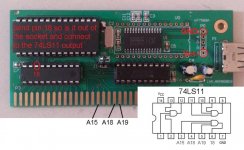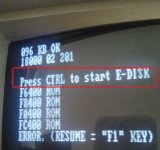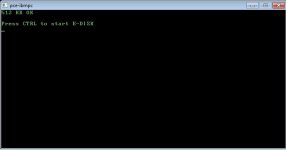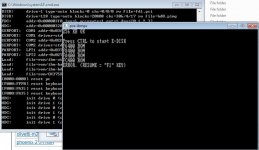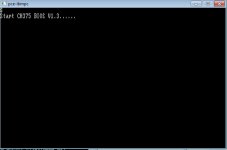pietja
Experienced Member
I have looked at the schematic for this board and the little chip in the bottom left is the address decoder.
It puts the ISA to USB chip at I/O address 260h.
However it also partially decodes the address for the onboard ROM.
It does not check address bits 19 and 18 so that puts the ROM at the following 4 address in memory.
D8000-DFFFF
98000-9FFFF
58000-5FFFF
18000-1FFFF
That means the last 3 addresses are an alias for the main location and puts them in normal memory.
So that the 5160 is only counting to 96Kb of memory is because that is where it hits the first rom alias.
If you want to be able to boot from this card it means you have to put the rom chip in another card with a fully functional address decoder
[SUB]Attached are all the translated files from the manufacturer of the chip. (rom bios, .sys driver, schematic and more)[/SUB]
It puts the ISA to USB chip at I/O address 260h.
However it also partially decodes the address for the onboard ROM.
It does not check address bits 19 and 18 so that puts the ROM at the following 4 address in memory.
D8000-DFFFF
98000-9FFFF
58000-5FFFF
18000-1FFFF
That means the last 3 addresses are an alias for the main location and puts them in normal memory.
So that the 5160 is only counting to 96Kb of memory is because that is where it hits the first rom alias.
If you want to be able to boot from this card it means you have to put the rom chip in another card with a fully functional address decoder
[SUB]Attached are all the translated files from the manufacturer of the chip. (rom bios, .sys driver, schematic and more)[/SUB]

